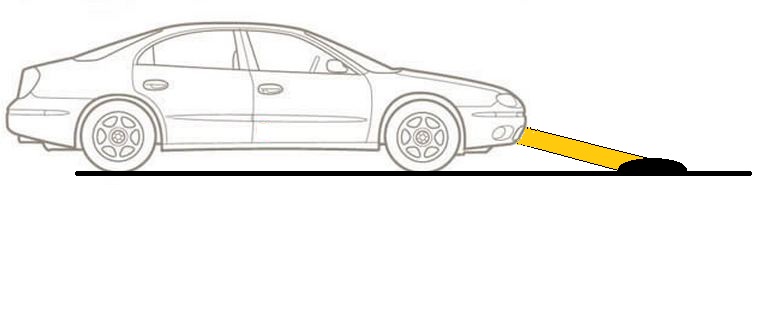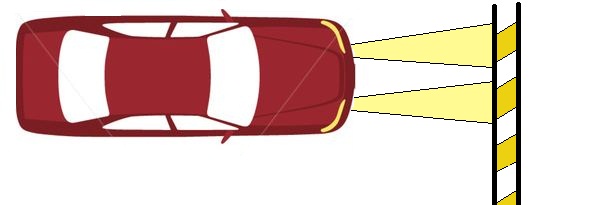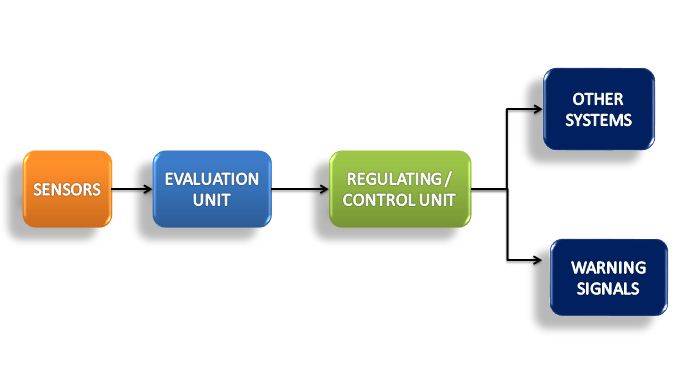Speed Bump Detection System
by Hemanth Potluri, Clemson Automotive Engineering Graduate Student
- Basic Description
-
The speed bump detection system in a vehicle is a driver assistance system used to detect speed bumps on the roads and send this information to the driver or other components in the vehicle. The driver may fail to notice the speed bumps in complex driving conditions especially during nights or in the rainy season or in the winters because of low visibility. The passengers and the vehicle are subjected to strong vibrations when the vehicle passes through the speed bump at a speed greater than prescribed. Moreover, the chassis components may be damaged and the life of shock absorbers may be reduced. The braking distance may increase when the vehicle passes through the speed bump at a greater speed as it loses contact with ground when it passes over the speed bump. The speed bumps are detected with respect to their height. A certain value of height is ascertained to the system and speed bumps above this height are only detected. This helps to avoid unnecessary warnings to the driver for minor height bumpers.


Video sensors or RADAR sensors or LIDAR sensors or LASER sensors or ultra-sonic sensors or combination of any of these sensors can be used as object detectors in this system. The video sensors detect the speed bump based on the color as speed bumps are usually painted in white and yellow. RADAR sensors or LIDAR sensors which are used for the adaptive cruise control system can also be used for this system. RADAR sensors of both short range and long range can also be used. Ultrasonic sensors can be used but they are not very reliable as their range is very limited and they may not provide sufficient time for the driver to brake. The video sensor detects the speed bumps and sends this data to the evaluation unit, which analyses with help of predefined parameters like the colors sensed and the height of the speed bump. It uses image processing algorithms to process the data. The data evaluated by the evaluation unit is sent to the control unit. Based on the data sent by the evaluation unit the control or the regulating unit generates information to be sent to the driver or other systems of the vehicle like the braking system. The driver is alerted by one or more visual or acoustic or by haptic signals like vibrating the steering wheel or seat of the driver.

Other systems like the active chassis system or the automatic braking system can be integrated with this system. The control unit of the speed bump detection system sends the information to the control unit of these systems and necessary action is taken by these systems. The active chassis system pretensions the chassis before the car passes through the bump and returns to normal state after the vehicle passes the bump. The automatic braking system reduces the speed of the vehicle by braking when it receives information from the speed bump detection system.
- Sensors
- Video Sensors, RADAR Sensors, LIDAR Sensors, Ultra Sonic Sensors.
- Actuators
- Brakes
- For More Information
- [1]
Speed booms detection for a ground vehicle with computer vision, Advances in Mathematical and
Computational Methods,
- [2] Method and system for assisting the driver of a motor vehicle in identifying ..., Google Patents.
|

